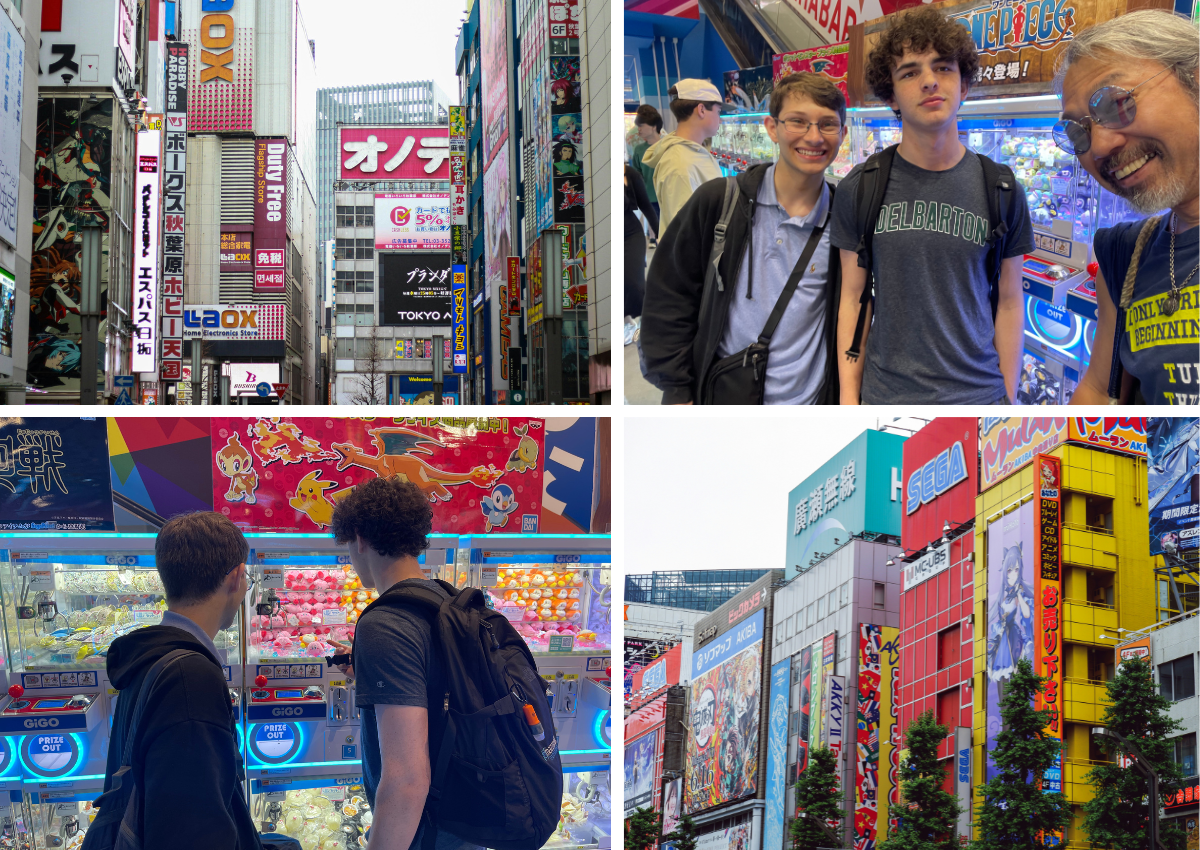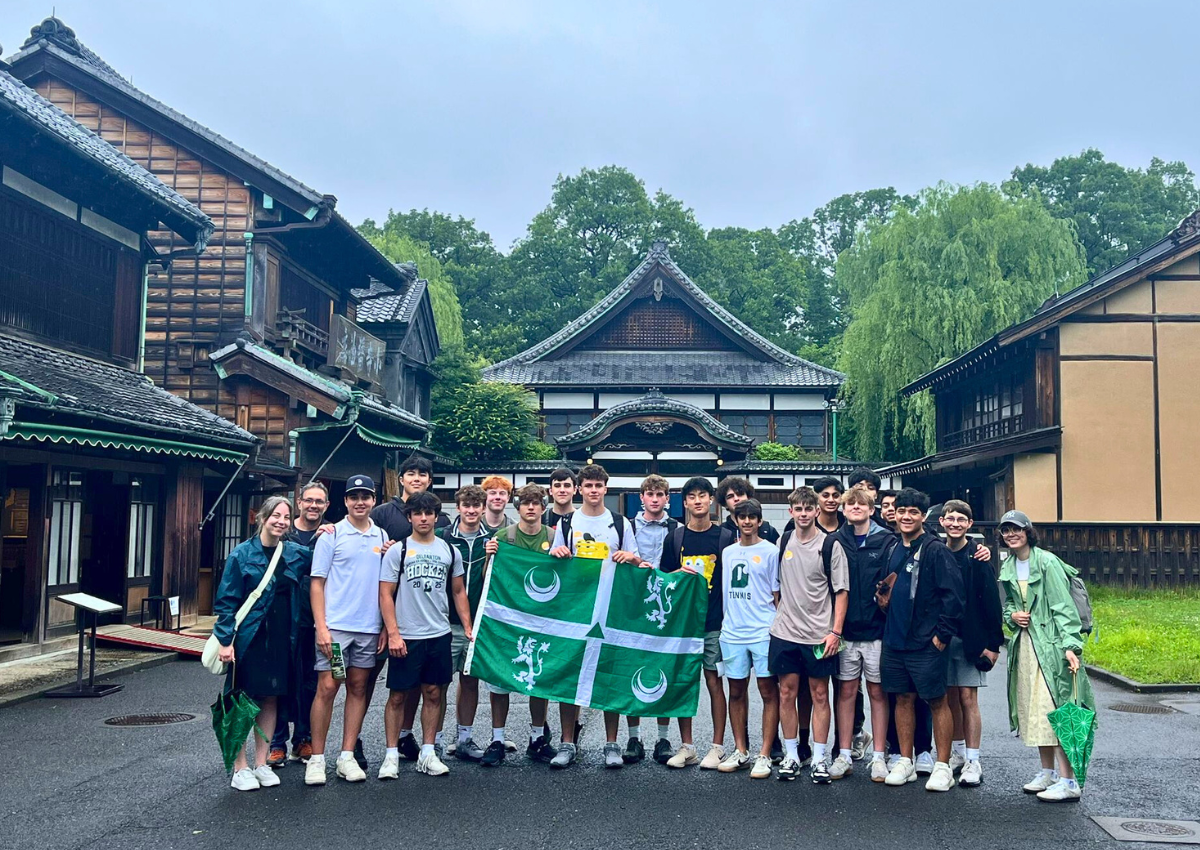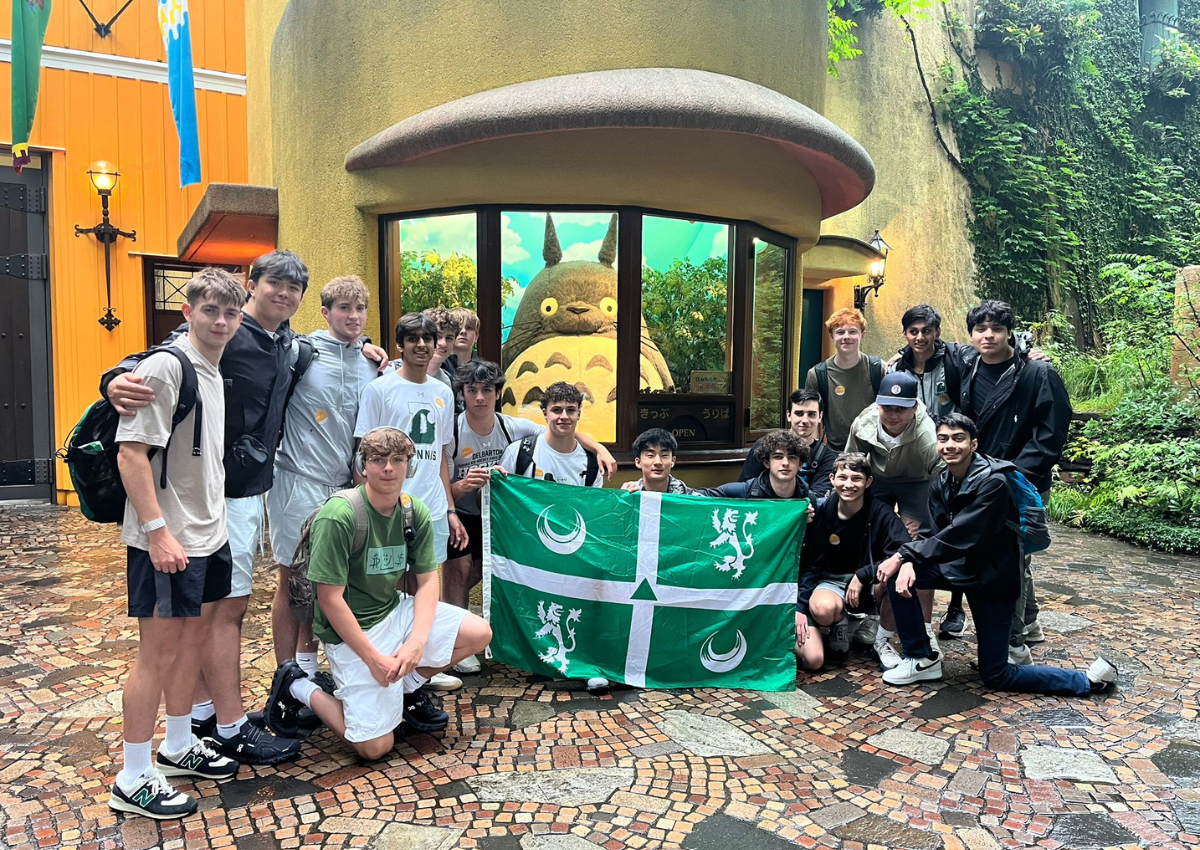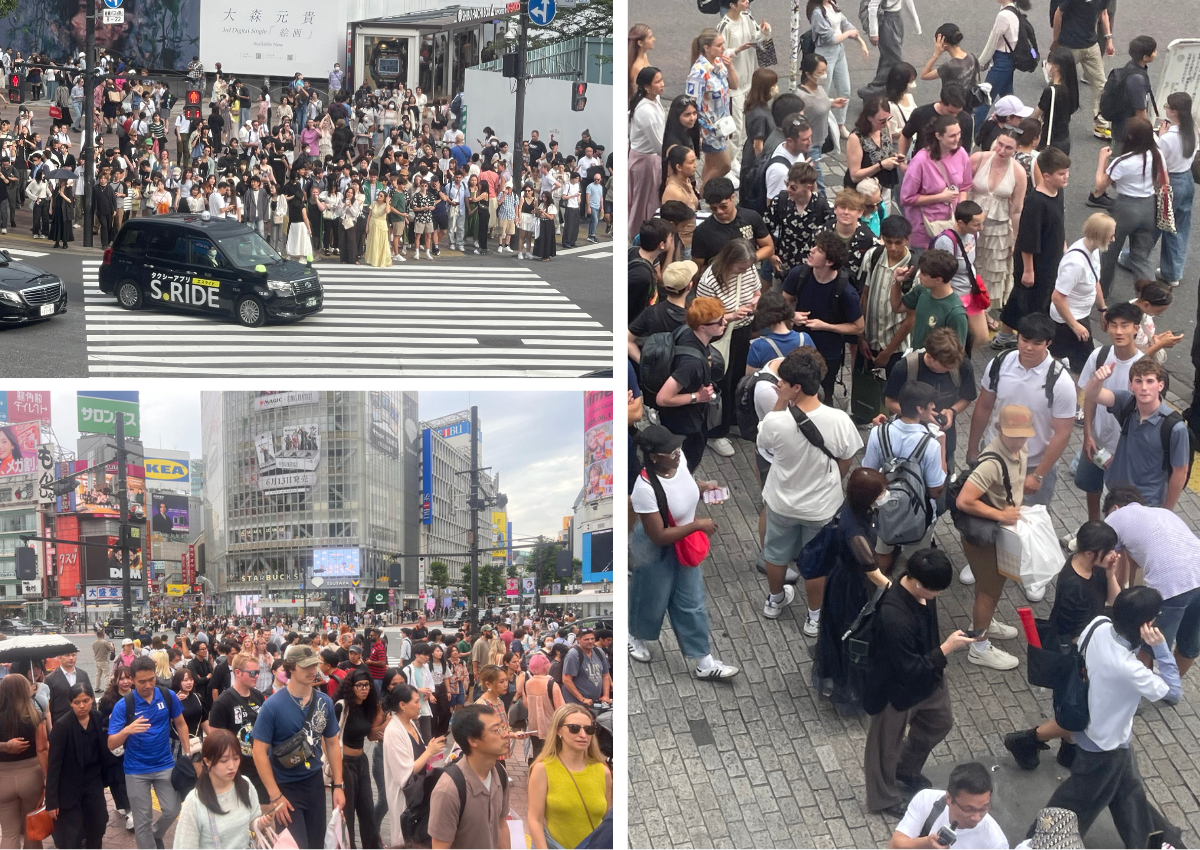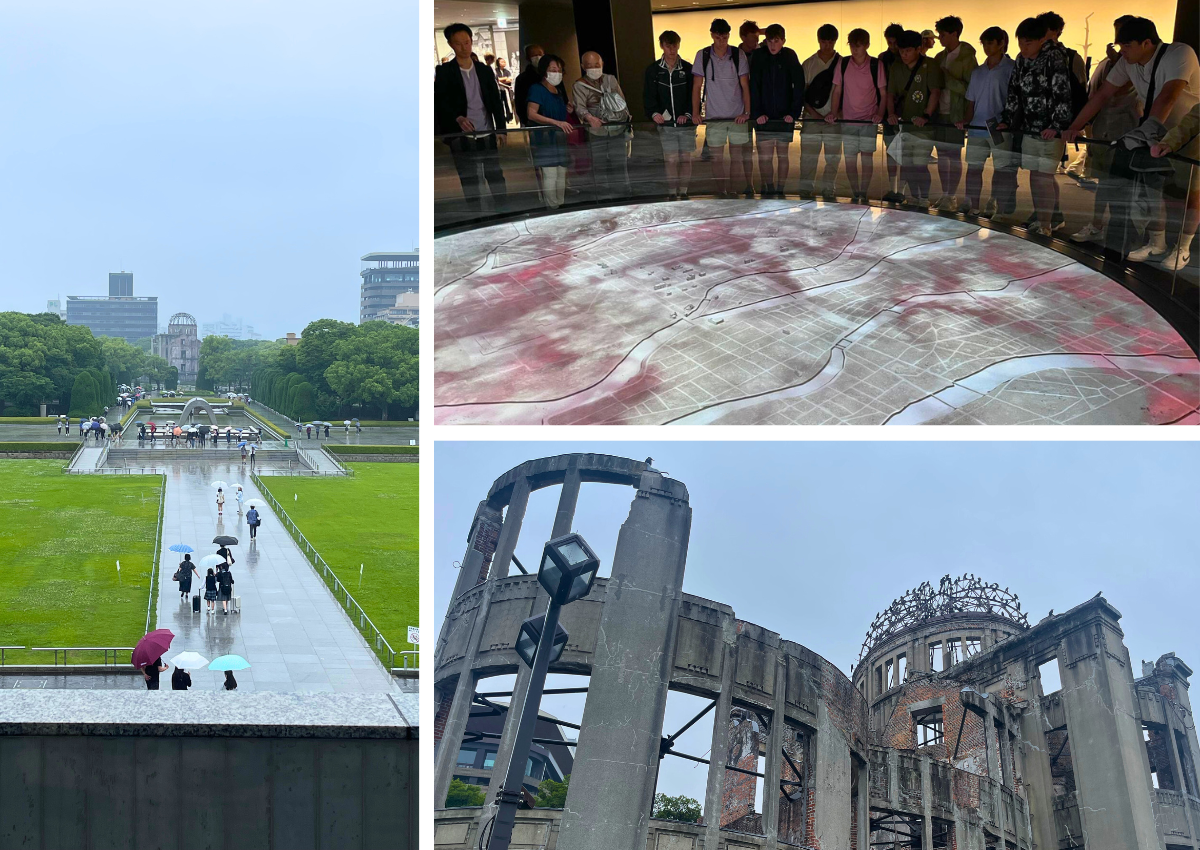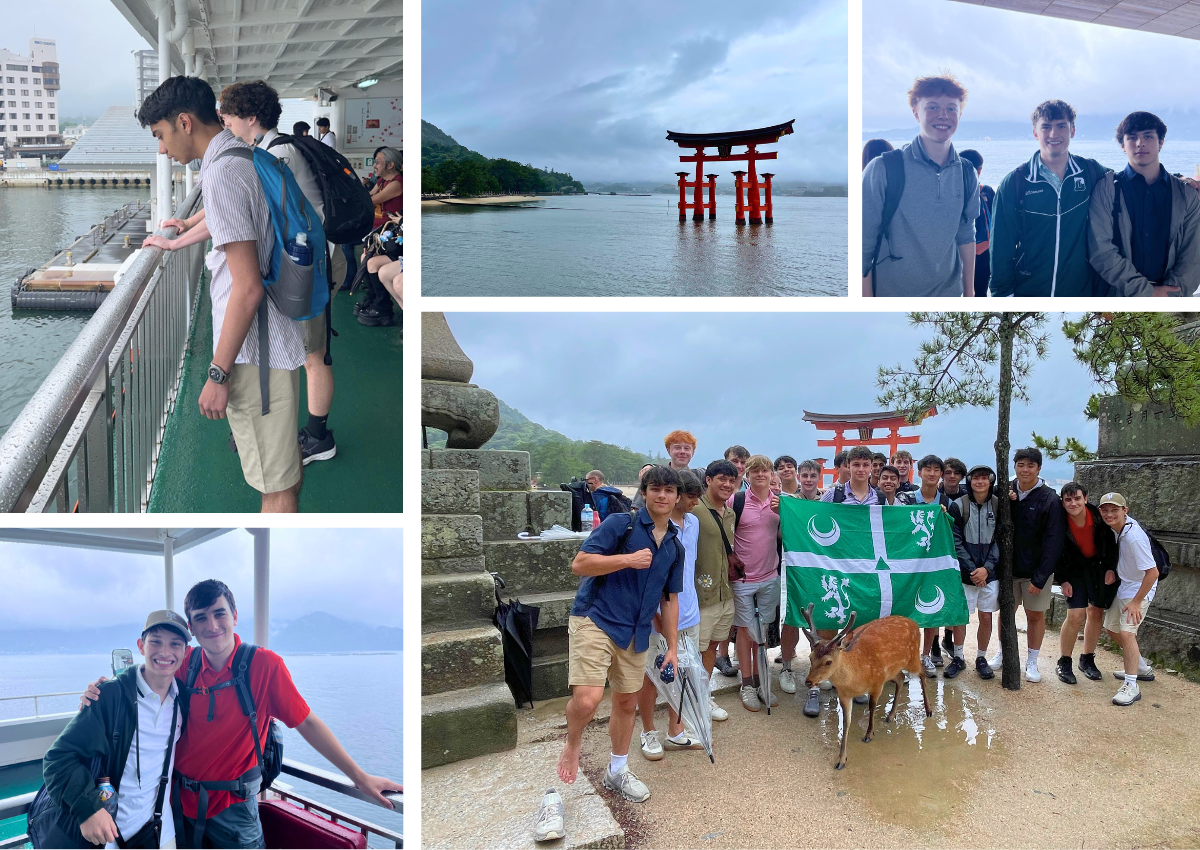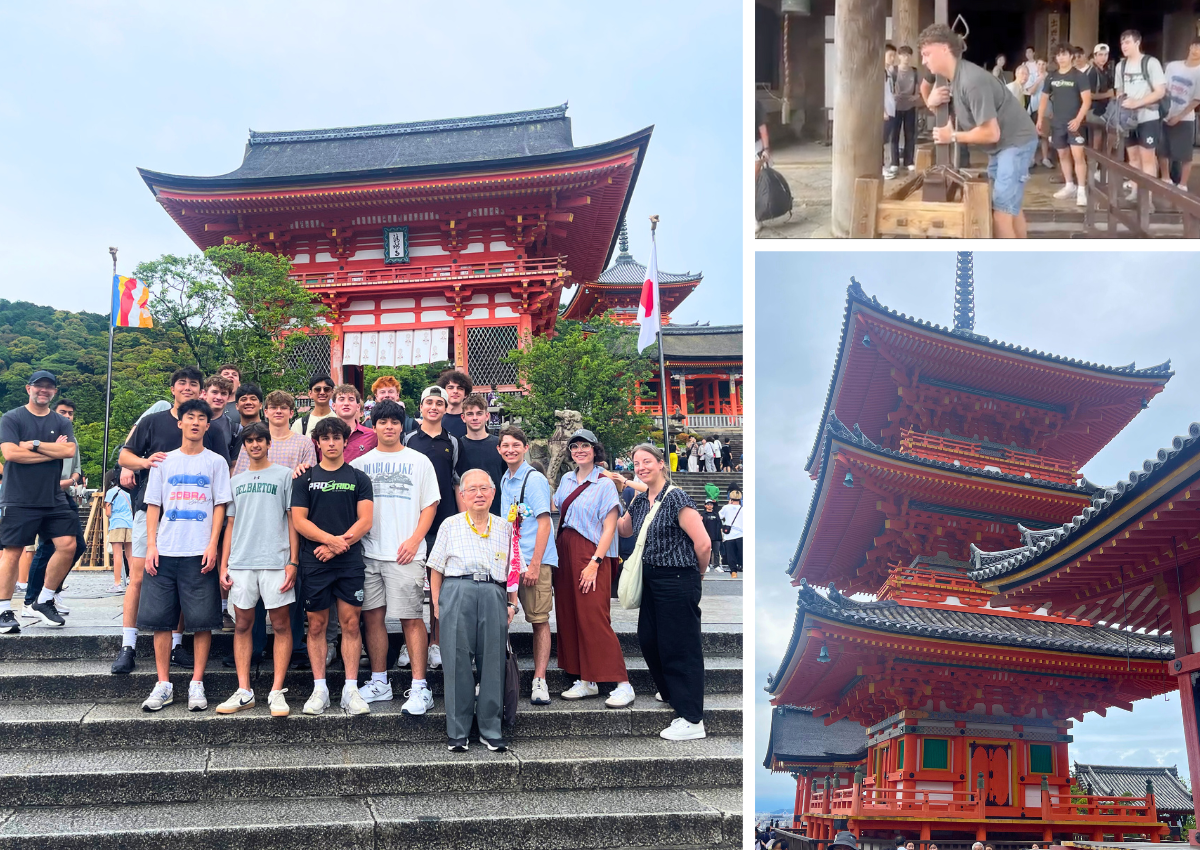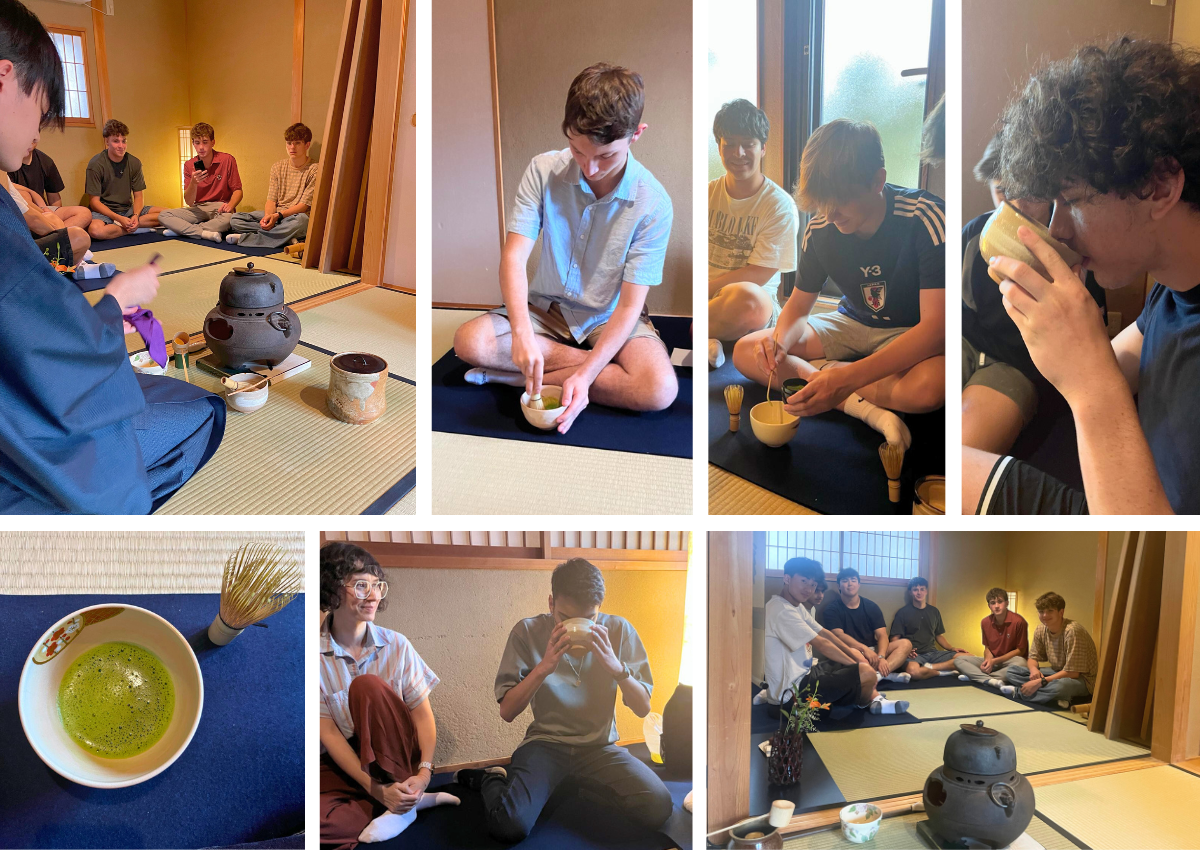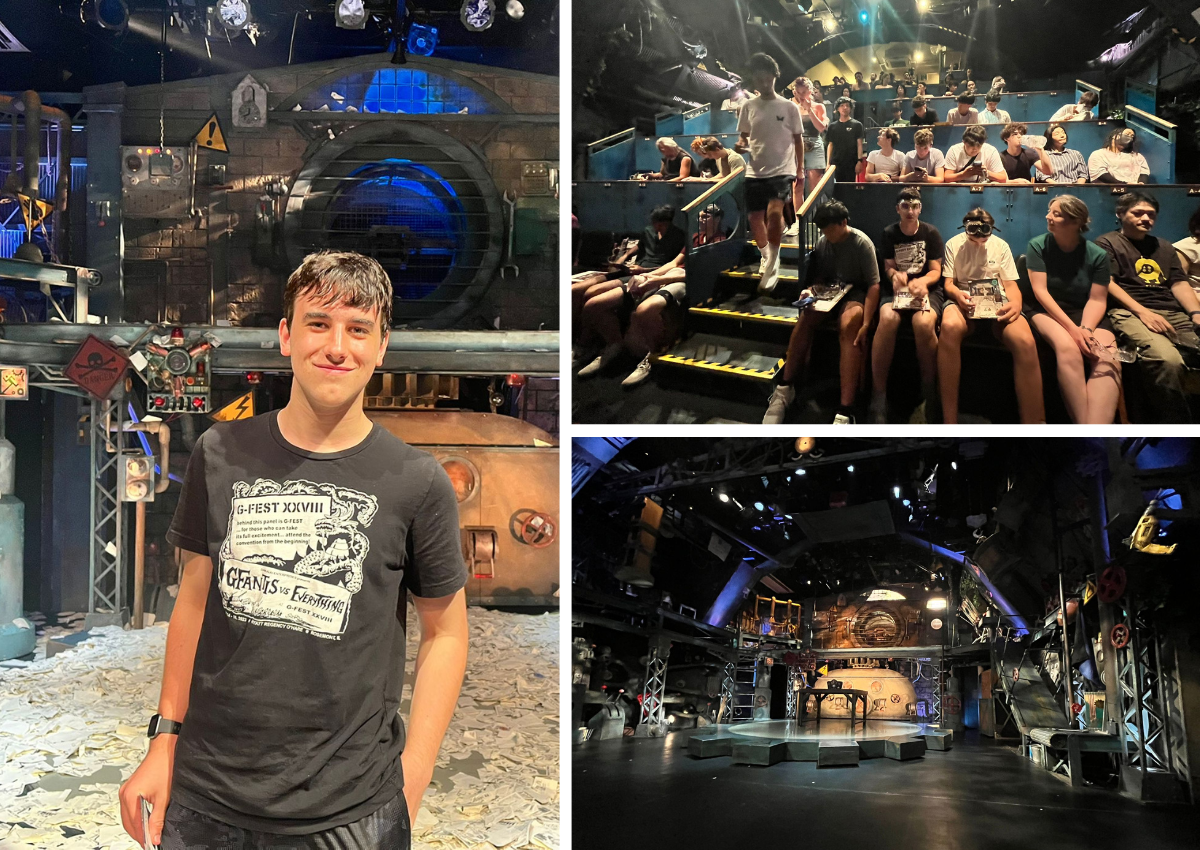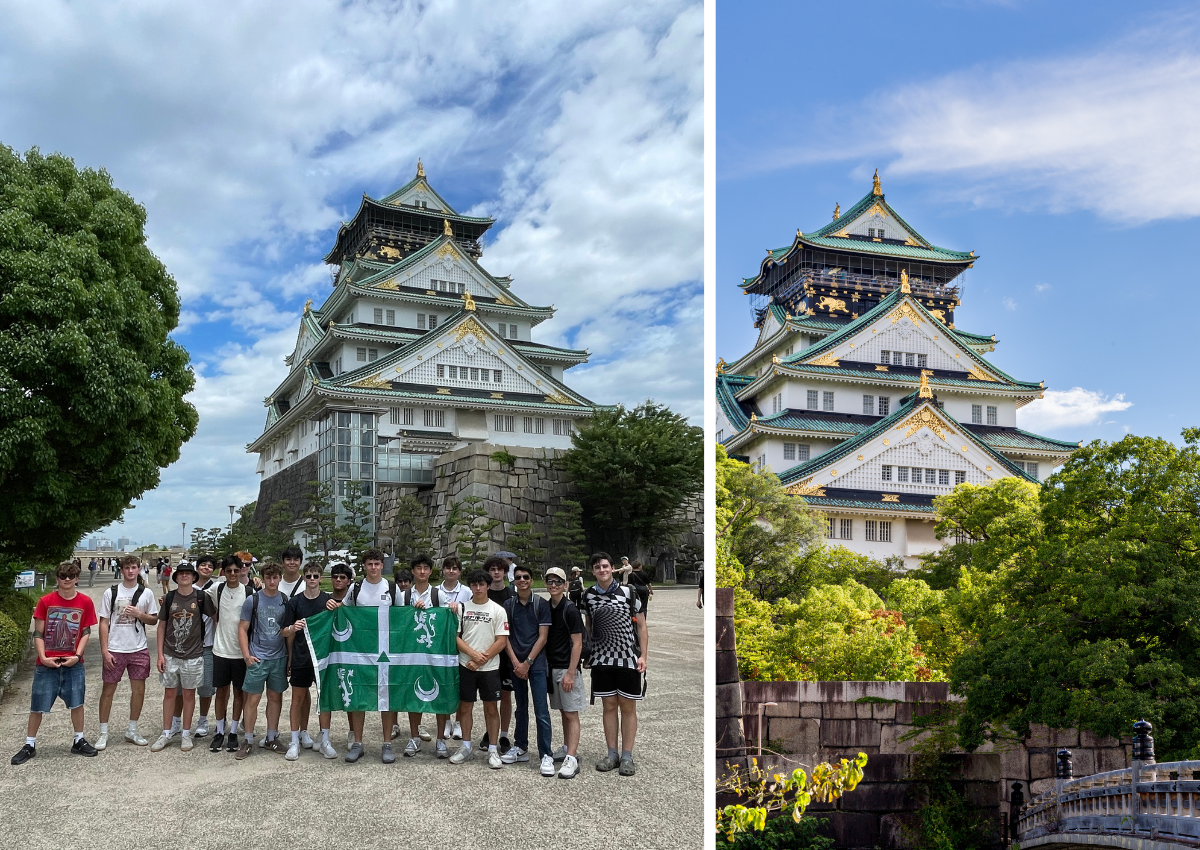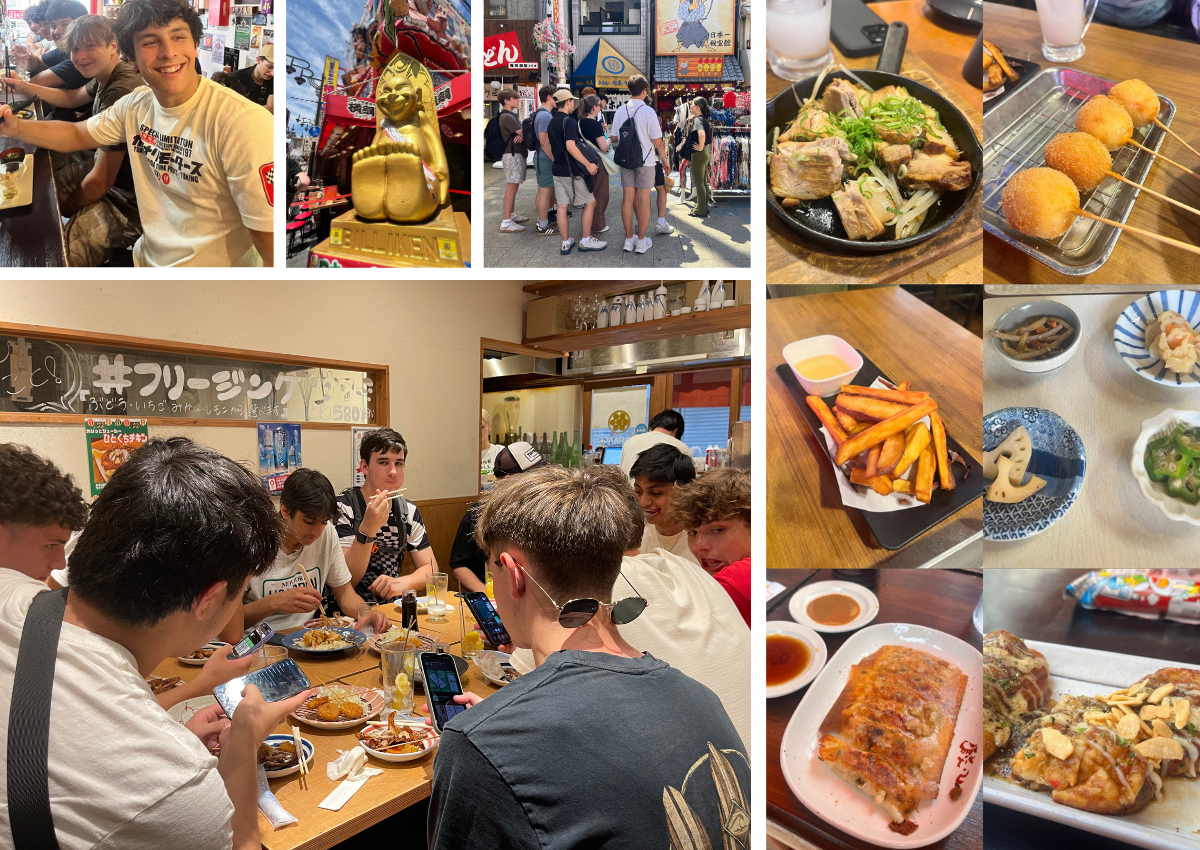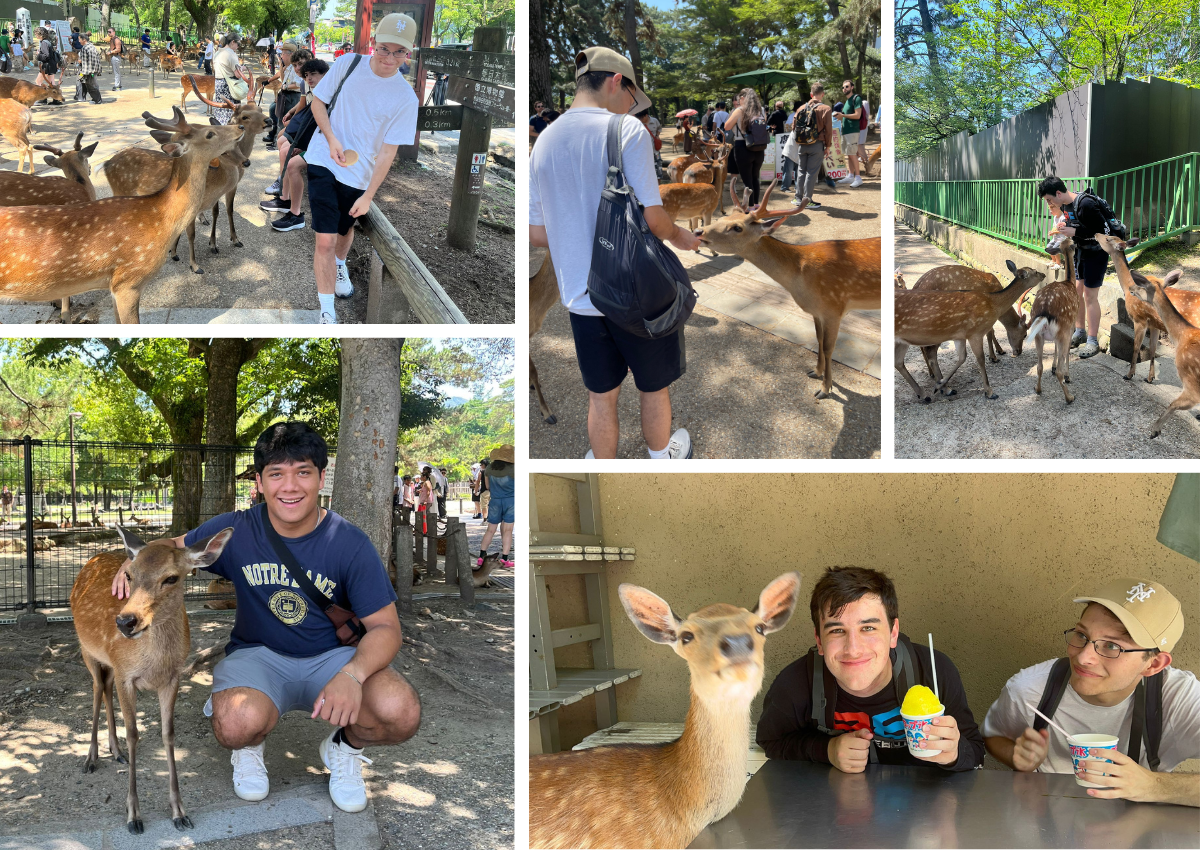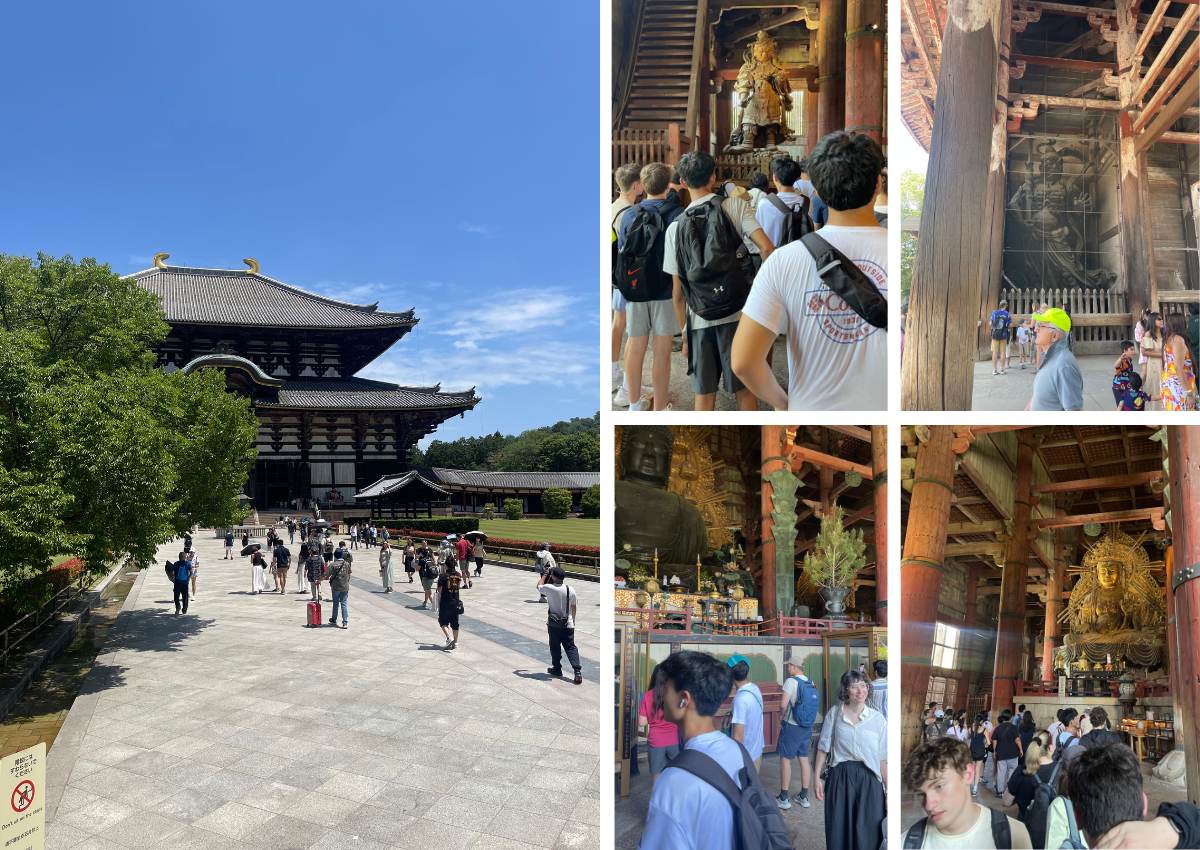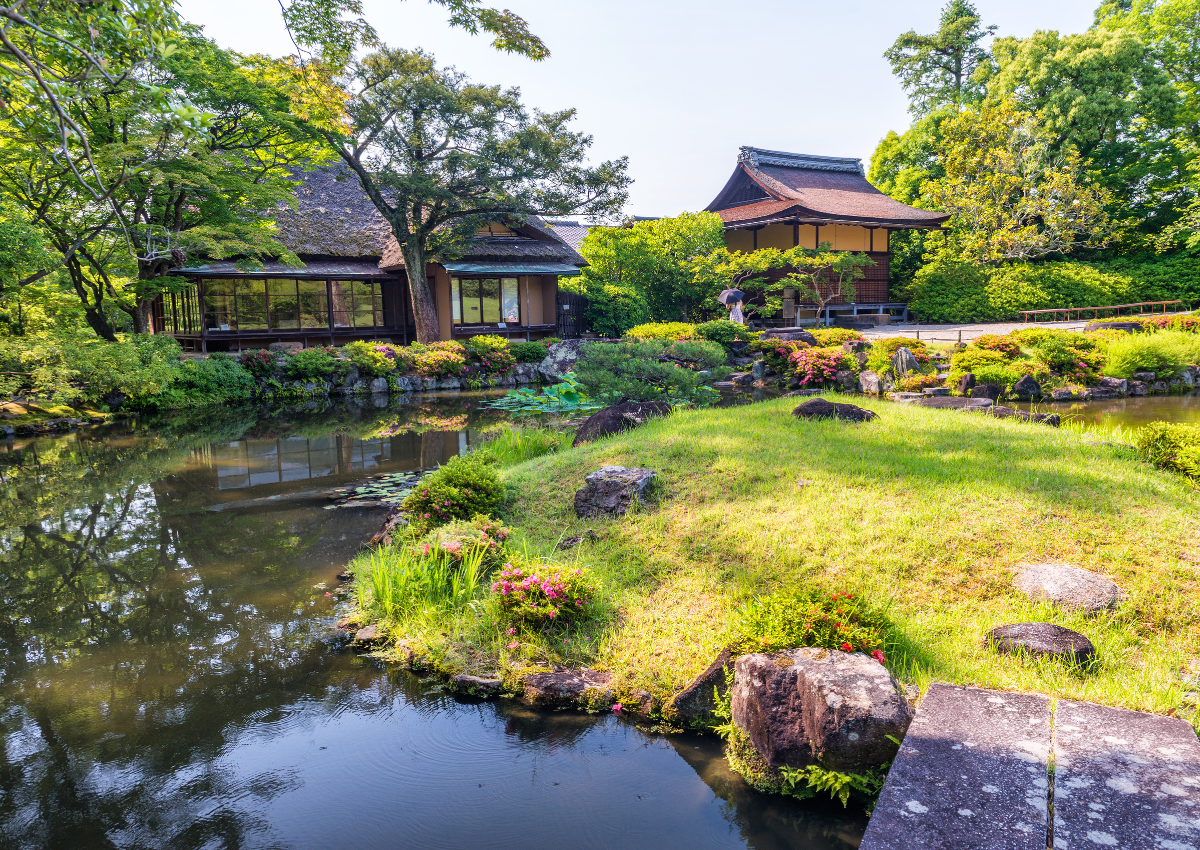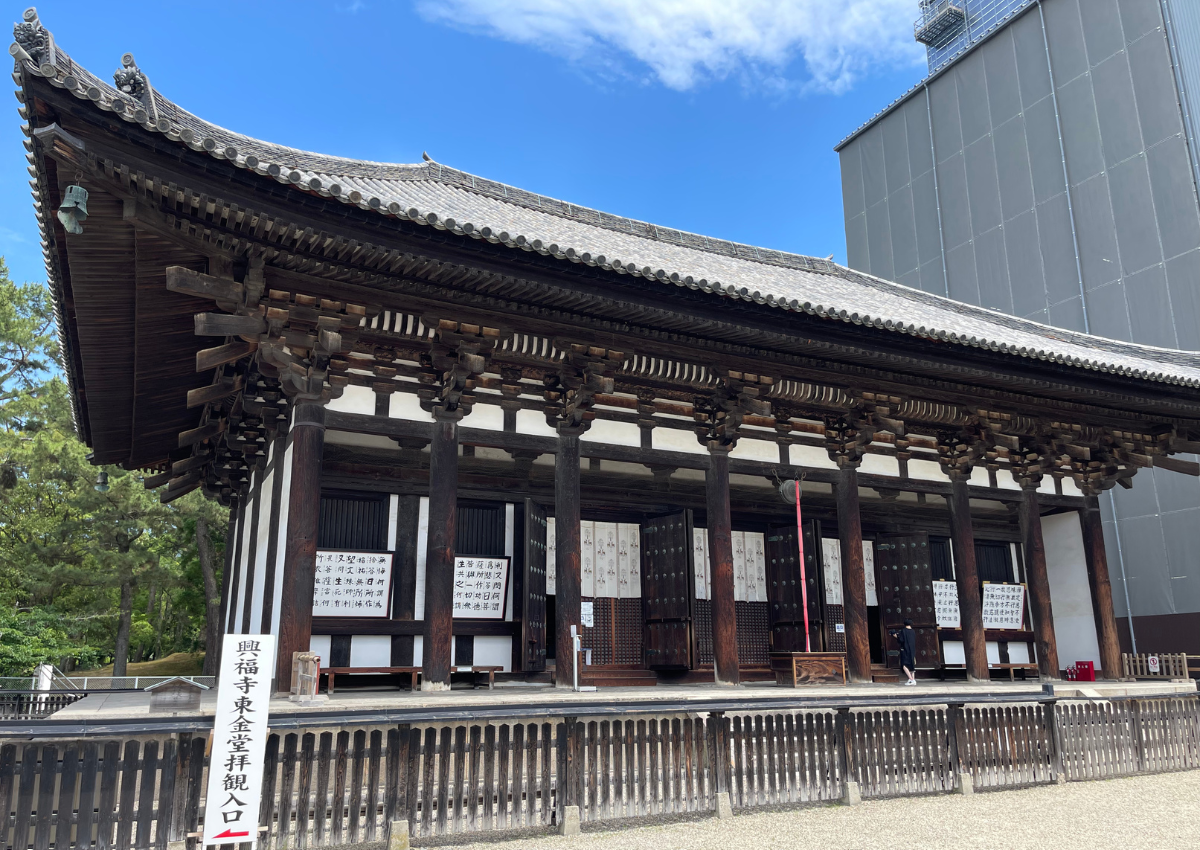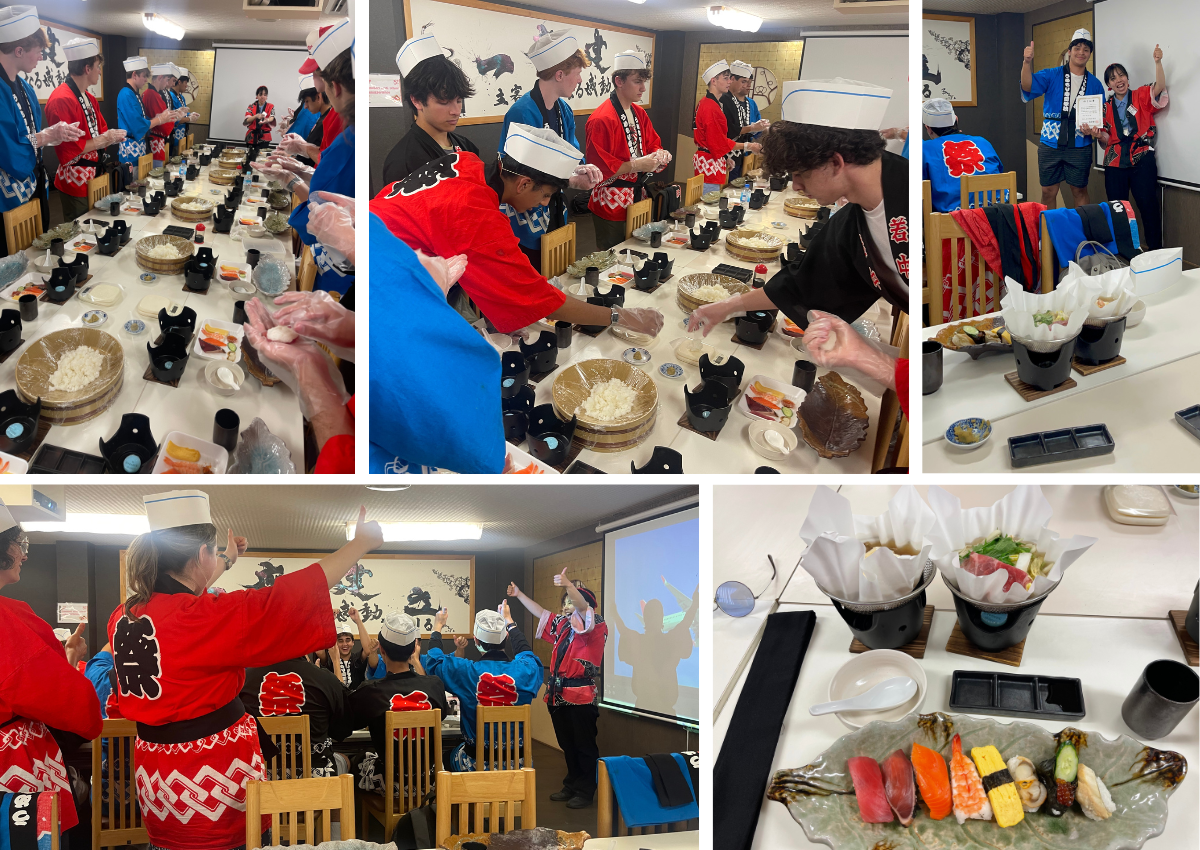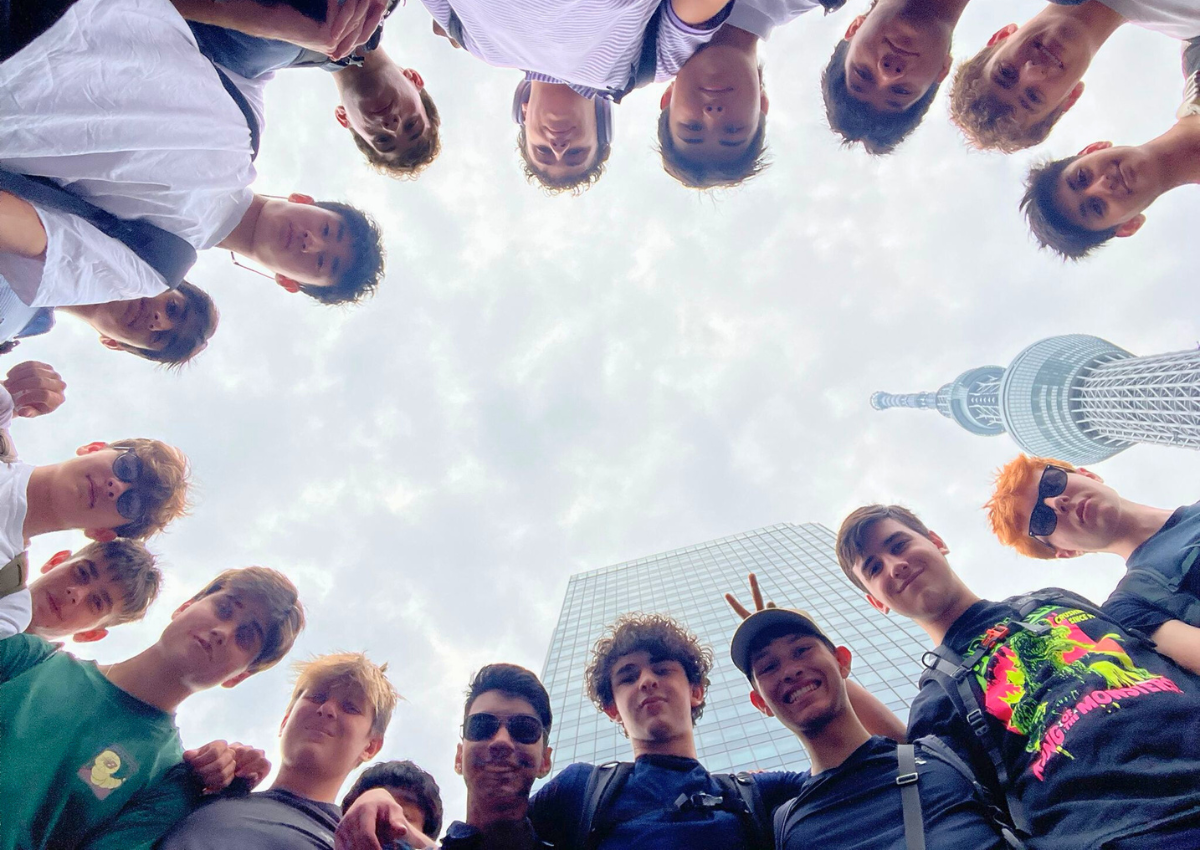Custom Program Spotlight: “Anime, Art, and Culture in Japan” with Delbarton School
“Japan is truly timeless, a place where ancient traditions fuse with modern life, as if it were the most natural thing in the world.” - Lonely Planet
Over 10 immersive days, a group of students from Delbarton School in New Jersey were led on many unforgettable adventures in Japan by EdOdyssey Excursion Leader Yuki Kudo and several other local guides, alongside faculty chaperones Caitlin Servilio, David Donovan, and Yaiza Dominguez Marca.
As they explored the topic of “Anime, Art, and Culture in Japan,” their travels began in the electric atmosphere of Tokyo. From the cosmopolitan intensity of the capital, they moved on to visit the timeless heart of Himeji, the historic center of Hiroshima, the culture and elegance of Kyoto, the foodie port city of Osaka, and, finally, Nara—the awe-inspiring political and religious heart of ancient Japan.
Below are some highlights.
TOKYO: ANIME, ARCHITECTURE & DIGITAL ART
From fast-paced Shinjuku with its gleaming skyscrapers and glowing neon signs to the ancient temples and traditions found in Asakusa, Tokyo is a city of contrasts, named in 2024 as the “Best Big City in the World” by Condé Nast Traveler.
Figure Drawing Workshop. In Akihabara, students met with our guide, Yuji-san, who introduced them to the history and current culture of manga and anime in Japan. Participating in a figure drawing workshop with a cosplayer model was a perfect introduction to the trip’s theme.
Scavenger Hunt. After an introduction to Akihabara, students split into four teams for a photography scavenger hunt around the area. This neighborhood has become a center of otaku and anime culture, with dozens of stores that specialize in collectibles and figurines, retro video games, and card games.
Sensoji Temple. In Asakusa, Yuji told students all about Sensoji Temple, and they spent an hour exploring the colorful Buddhist temple, the oldest in Tokyo.
Ghibli Museum & Film Appreciation Bus tour. The bus tour took students to explore locations related to the works of Japan’s most renowned animation studio. The Open Air Architectural Museum, where many of the houses were used for reference for Ghibli movies, and a stop for lunch at Hotel Gajoen Tokyo, which was an inspiration for “Spirited Away,” were two popular stops before students were set free to explore the Ghibli Museum.
Ghibli Museum. Tickets to this popular museum, set in Inokashira Park, sell out quickly. Here, in what feels like an immersive experience more than a typical museum, students saw exhibits that introduced the animation and production process, original sketches, the impressive ceiling fresco, and an original short animated film screening from Studio Ghibli. Dotted around are famous characters, like a life-sized robot from "Castle in the Sky" in the rooftop garden and a replica of the Catbus from “My Neighbor Totoro.”
Tokyo SkyTree & Tokyo Tower. Stretching 2,080 feet into the air, the Tokyo SkyTree is Japan’s tallest structure, which makes it a great place for impressive views over the city. Students had a chance to visit the observation decks and enjoyed taking photos outside, too. We also stopped for photos by Tokyo Tower, which is about half the height of Tokyo SkyTree, but still 1,092 feet tall.
teamLabs Borderless. Students entered the immersive digital art world by the art collective teamLabs for an afternoon of creative inspiration. They were free to explore at their own pace, discovering artworks that connect and flow between rooms with the use of lights, mirrors, and more.
Shibuya Crossing. Braving the chaos at the busiest pedestrian crossing in the world, students experienced the 7-way crosswalk that averages about 3,000 people every minute! It’s nickname? "Scramble."
HIMEJI: HISTORY & MUSIC
Stocked with bento boxes for lunch, the group headed to Himeji by shinkansen, the high-speed bullet train.
“Himeji makes a huge impression as soon as you step out of the north exit of the train station,” EdOdyssey’s Japan Program Director Sarah Reid said. “There's a broad street running straight from the station, all the way up to the castle sitting up on the hill. It absolutely dominates the skyline above the modern buildings of Himeji city. Himeji has a huge area of covered pedestrian-only streets lined with every sort of shop, restaurant, and entertainment venue you can think of.”
Himeji Castle. A UNESCO World Heritage Site and the largest surviving castle in Japan, Himeji Castle is a striking example of 17th-century Japanese castle architecture. The main complex is nicknamed the “White Heron Castle” for the curled ends of its roof design. Students toured the castle with a local guide, walking in socks up steep wooden staircases, spotting intricate carvings and impressive woodwork while taking in the stunning views over the city and surrounding countryside.
Karaoke at JOYSOUND. Japan is well known for its love of karaoke, so we took an evening to join in on this fun experience at JOYSOUND on Miyuki Street.
HIROSHIMA: A HAUNTING WALK THROUGH HISTORY
It was the world’s first atomic bomb attack in 1945 that made Hiroshima a name that we all recognize from our history books. The Peace Memorial Park is a reminder of that horrific day—a colorful and tranquil place to sit and reflect. Through the arch of the park’s cenotaph that honors the bomb’s victims, the haunting remains of the Atomic Bomb Dome (an UNESCO World Heritage Site) are visible. Though its history is always present in the background, Hiroshima today is a thriving and vibrant city.
Hiroshima Peace Memorial Museum. At their own pace, students explored the museum, which is an emotionally-challenging experience as the events surrounding the atomic bomb attack are not softened or filtered. It’s a lot to process. Alongside powerful video testimonials from survivors, it is full of memories and photos, and personal objects like destroyed clothing, including student uniforms, a melted lunchbox, a burned tricycle, and much more.
Miyajima Island & The Itsukushima Shrine. After a ferry ride over the ocean, the group arrived on Miyajima Island to visit the iconic sacred Shinto monument, the Itsukushima Shrine, another UNESCO World Heritage Site. Students had a few hours to freely explore the island’s walking trails, aquarium, museums, shops, and restaurants.
KYOTO: TEMPLES, TEAHOUSE TRADITIONS & NON-VERBAL THEATER
Lonely Planet describes Kyoto as “old Japan writ large: atmospheric temples, sublime gardens, traditional teahouses, and geisha scurrying to secret liaisons.” It is also often referred to as “the heart of Japan” and “the city of ten thousand shrines.” Those who have seen the movie “Memoirs of a Geisha” may recognize some locations, such as the orange-pillared walkway of the Fushimi Inari-taisha Shrine. It is also home to Japan’s tallest wooden pagoda, quite a few Zen gardens, traditional geisha culture, and many different museums.
Nishiki Market. Nicknamed “Kyoto’s Kitchen,” this 700-year-old street food market was a treat to visit Students had fun selecting their lunch as they wandered the narrow alleyway past more than 150 tiny stalls selling culinary delights like tofu, Japanese pickles, soy donuts, grilled squid, kumquats, sushi, and perhaps the most fascinating local favorite of all—baby octopus on sticks with a boiled quail egg in the brain cavity.
Kiyomizu-dera Temple. Our guide in Kyoto, Hideo-san (who sang to the group every morning!), led a tour of this celebrated temple. Its name means “Pure Water Temple” as it was founded on the site of the Otowa Waterfall long ago, in the year 780. Here, in another UNESCO World Heritage Site, students had fun trying their hand at a challenge: Could they lift the same weight as a samurai?
FLOWER Teahouse. In the historical preservation neighbourhood of Ninenzaka, students entered a traditional machiya for an authentic tea ceremony to learn the basics of tea making with a local expert. This is a centuries-old ritual in Japanese culture. Using a tea bowl, tea scoops, and whisks, students were introduced to the world of matcha and followed instructions to make their own.
Kinkaku-ji “Golden Pavilion.” Our group toured the grounds around the iconic Golden Pavilion, the top two stories of which are covered in pure gold leaf. Each floor was designed in a different architectural style and it’s set within a “Japanese strolling garden” with a pond, bridges, rock compositions, and little islands.
Ryoanji-Temple. Kyoto is considered the spiritual center of Zen Buddhism in Japan, and this is the site of one of the most famous Zen gardens—the serene, 3,000-square-foot rock garden of Ryoan-ji (or “The Temple of the Dragon at Peace”), which is more than five centuries old. Monks rake white gravel into perfection around the 15 boulders here daily. Later, students enjoyed a plant-based lunch with tofu hotpot at the Saigen-in Tofu restaurant nearby.
GEAR Non-Verbal Theater. Beginning in 2012, this long-running show was the first non-verbal theater performance in Japan. It is set in the future, following the story of “Doll” and “Roboroids” and aims to stimulate all five senses of its viewers, using impressive stage effects, techniques, and technology. It incorporates mime, juggling, breakdance, and magic, and the costumes and visuals are styled by a local Manga artist.
Nidec Kyoto Tower. Students took in panoramic views over Kyoto from the observation decks here, at about 328 feet.
OSAKA: A FOODIE’S PARADISE
Japan’s third-largest city by population, Osaka is an economic hub known for its nightlife and neon lights, its reputation as “the nation’s kitchen” and its strong foodie culture, the Nihonbashi Street Festa (which is one of the largest cosplay festivals in Japan), and the warmth and humor of its locals.
Osaka Castle. Student began their understanding of Osaka with a tour of this 16th-century shogunate castle, the most iconic historic landmark in the city. Inside, there’s an observation platform with views stretching over the city as well as a museum that tells the story of the castle’s history using holograms and 3D technology. The castle is surrounded by moats, gates, stone walls, turrets, and a garden with 600 cherry trees.
Osaka food tour. One of the best activities to do in Osaka? A food tour! For many hours, the students ate, and ate, and ate, sampling all of the local favorites in Dotonbori. Some popular street foods in Osaka include takoyaki (octopus balls), okonomiyaki (savory pancake), kushikatsu (deep-fried skewers), and kitsune udon (udon noodles with fried tofu).
NARA: TEMPLES, DEER & SUSHI
Nara was not only the first documented permanent capital of the country, but it’s one of Japan’s spiritual, historical, and cultural hubs. The pace of life is slower here outside of the bigger cities the students had been exploring, and it felt like somewhere to stop, observe, and reflect on the small details and the history surrounding us.
Nara-kōen. When people think of Nara, its free-roaming deer likely come to mind. Nara Park is full of them, with about 1,200 of these majestic creatures protected here. They’re considered, in Shinto, quite sacred messengers of the gods. We took time to interact with the deer, and students were able to feed them shika senbei (deer crackers) available to buy from kiosks around the park.
Tōdai-ji Temple. One of the city’s eight UNESCO Heritage Sites, Tōdai-ji Temple is home to the famous 49-foot-tall Daibutsu Buddha statue. The scents of intense and red Japanese pine met us inside the temple as students took time to wander around this ancient site that was constructed in 752. The Big Buddha Hall was considered the world’s biggest wooden building until recently.
Isuen Gardens. These peaceful gardens, designed in traditional Japanese style, are an officially designated “place of scenic beauty.” Students strolled the paths along the ponds and paused to admire the various tea houses dotted around the gardens, some of which date back to the 1600s.
Kofukuji Temple. This is one of the oldest Buddhist temples in Japan, recently celebrating its 1,300th anniversary, and is a symbol of Nara as a city.
Umemori Sushi School. Students tested their sushi-rolling skills and gained an appreciation for the ingredients and the rituals surrounding this popular Japanese cuisine.
LOOKING BACK & LOOKING AHEAD
"EdOdyssey put together an amazing trip for us,” Yaiza said. “Each day had something amazing... The trip was incredibly rewarding, and I developed a deep love for Japan. I hope and believe this was the trip of a lifetime for our students — and it definitely was for me.”
We always enjoy connecting with students who have just returned from a program with us, too. One of the questions we ask them is how their trip shaped their worldview. Here are a few responses from our Delbarton group, illustrating the transformative power of travel:
"I'm becoming more independent and comfortable navigating on my own, even in a foreign country." - Henry Williamson
“Experiencing a different culture and liking it so much opened me up to appreciating mine more.” - Owen Chow
“It showed me a new perspective of a country I had only ever heard about.” - Dillon Byrne
If you’re interested in running a custom program with us, in Japan or one of our other host countries—Canada, Chile, China, Ireland, Italy, Peru, Spain, the UK, or even a domestic program in the US—our custom programs page is linked below. Reach out to start a conversation.




